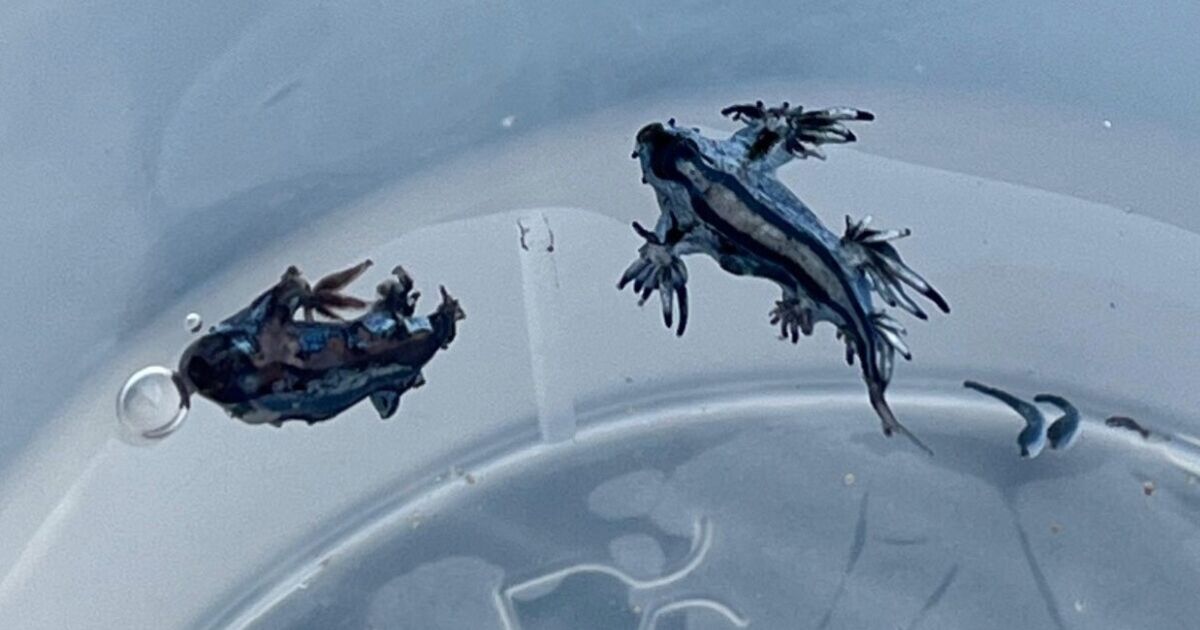Tourists have been banned from entering the sea along a seven-mile stretch of Spain’s popular Costa Blanca after a dangerous sea creature was spotted. Swimming was prohibited on the beaches of Guardamar del Segura in the Alicante province due to the presence of poisonous blue dragon sea slugs.
The blue dragon, also known as Glaucus atlanticus, is only four centimetres long but has a powerful sting which can cause severe pain, nausea and vomiting. Red flags were raised on the beaches in southern Spain on Wednesday, stopping visitors from going into the sea. On Thursday, Guardamar del Segura’s mayor said the ban was lifted, with yellow flags raised permitting visitors to re-enter the water.
Jose Luis Saez said there had been a “special surveillance operation” following the arrival of “two blue dragon specimens”.
“Municipal services, police, and lifeguards remain attentive to the evolution of the situation,” he said on X.
The mayor said it was believed the blue dragons had been brought to the coastline by strong currents and urged people to not touch them, even if wearing gloves.
“We remind people that despite its bright and striking colour and its small 1.5 inch size, they should stay away from this animal because of its sting,” Mr Saez said.
“If you get stung, wash the area affected with salt water and head to your nearest first aid point or health centre.”
Local reports suggested another blue dragon had been spotted at a nearby beach in Torrevieja on Thursday, prompting restrictions to be introduced.
Days earlier, blue dragons had been sighted in La Linea, near Gibraltar.
The Santa Barbara beach was closed after six specimens were reportedly found washed up on the shore.
Gibraltar’s Department of Environment issued a warning and urged swimmers to stay alert, according to the Gibraltar Chronicle.
Blue dragons feed on larger prey, including the deadly Portuguese man o’ war and other venomous creatures.
“The blue dragon stores the man o’ war’s stinging nematocysts within its finger-like appendages, making itself equally venomous to predators,” One Earth says.
“One sting from this little guy can lead to nausea, pain, vomiting, acute allergic contact dermatitis, and post-inflammatory hyperpigmentation.”
It said they can be found on the surface of the Atlantic, Pacific and Indian oceans in temperate and tropical waters across the world.
They had, according to reports, been absent from Spain’s Mediterranean coast for around 300 years until 2021.

